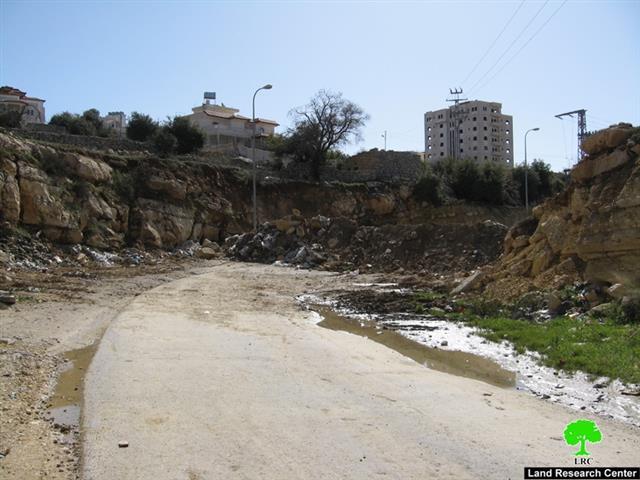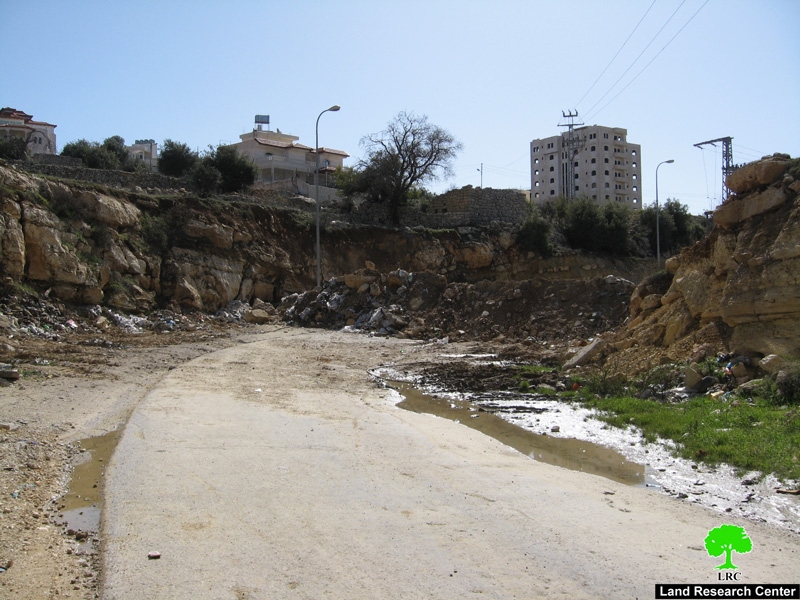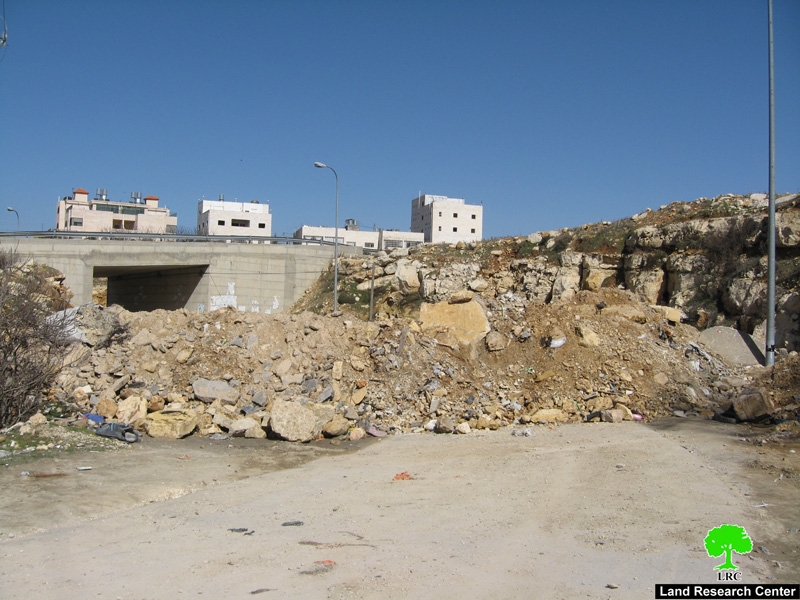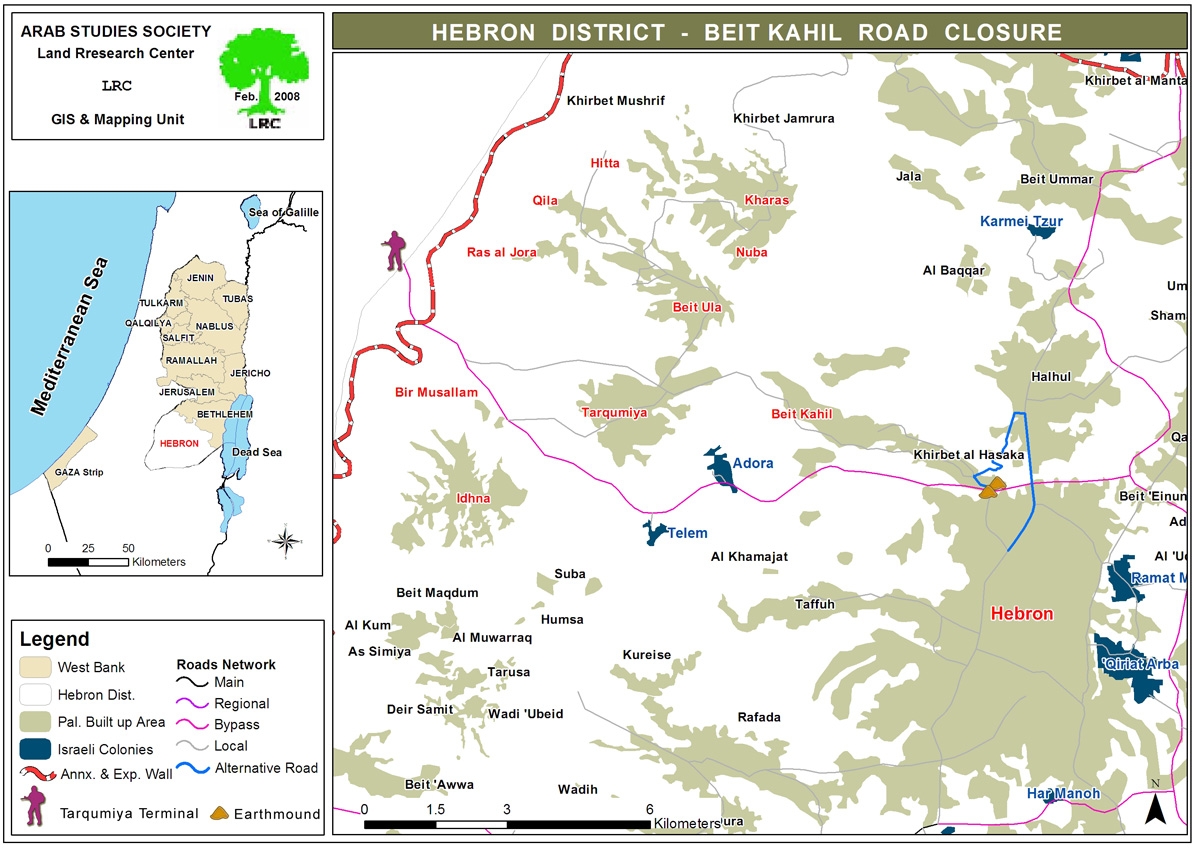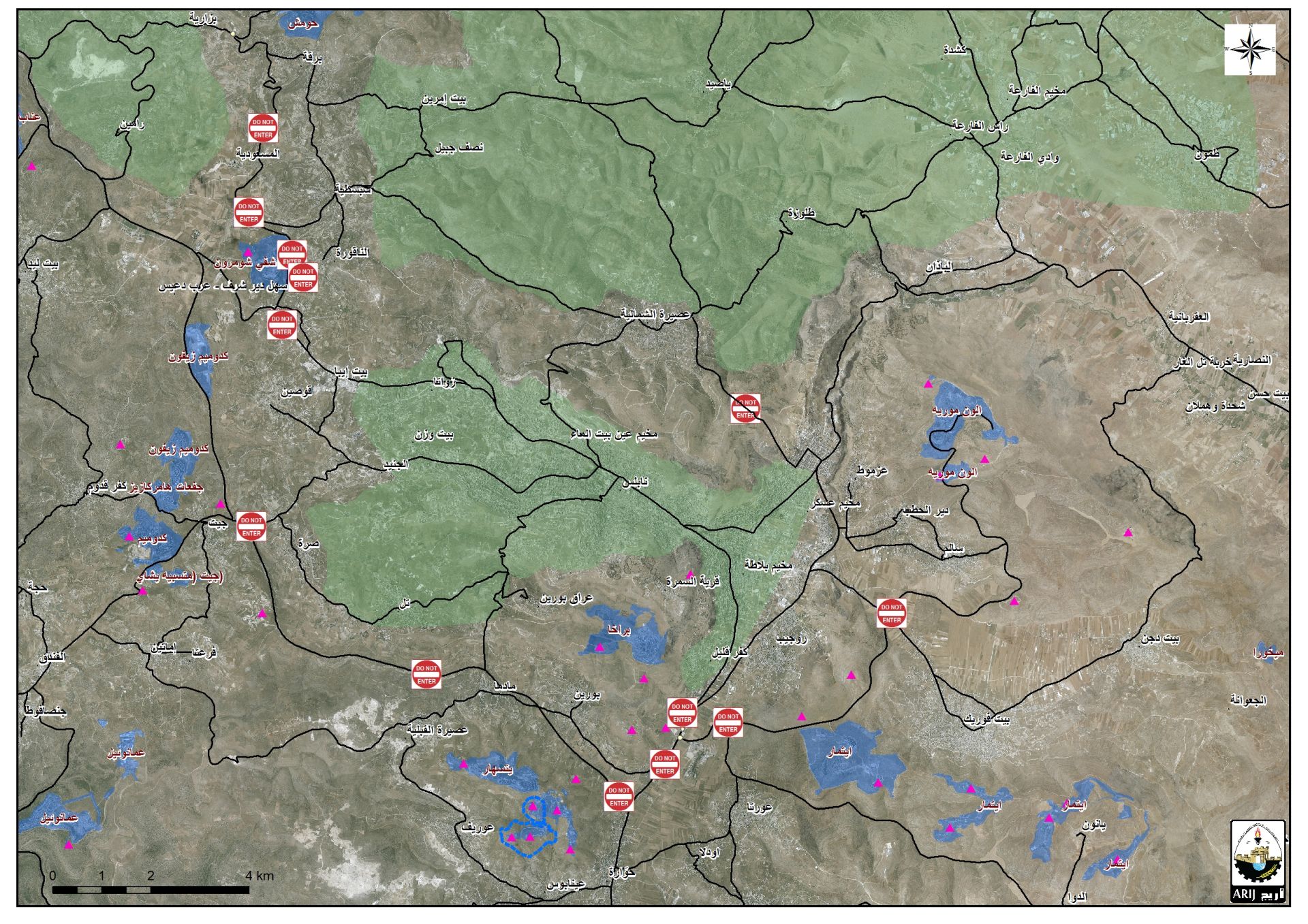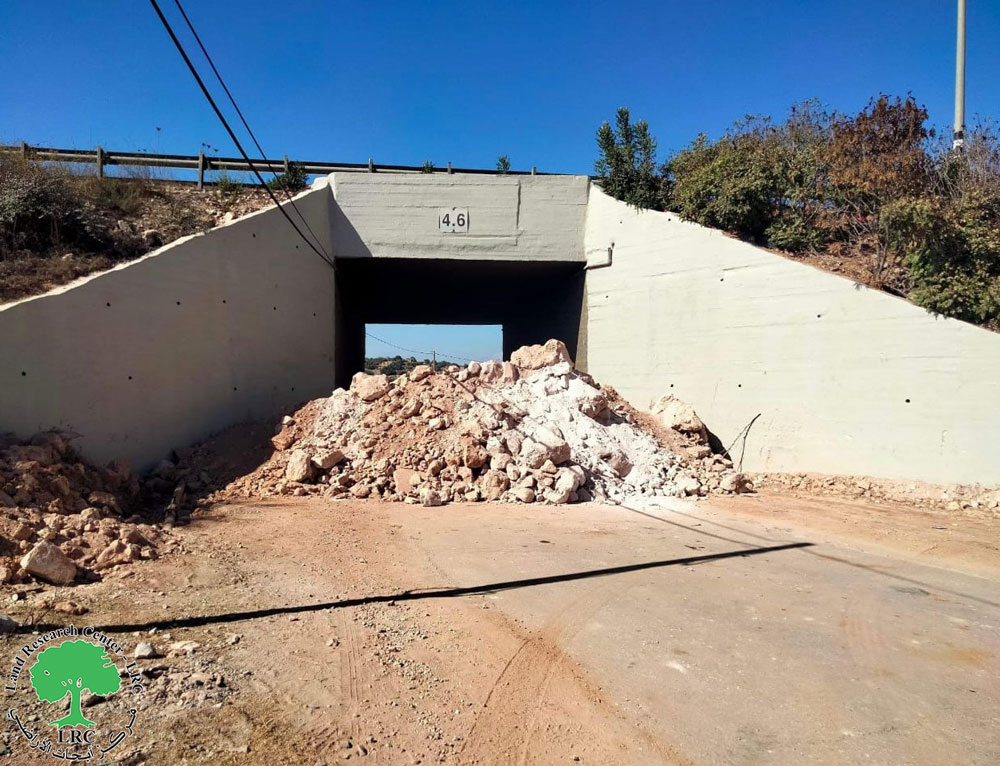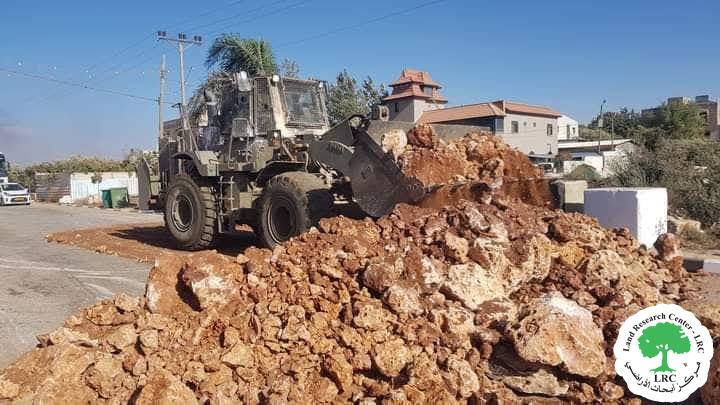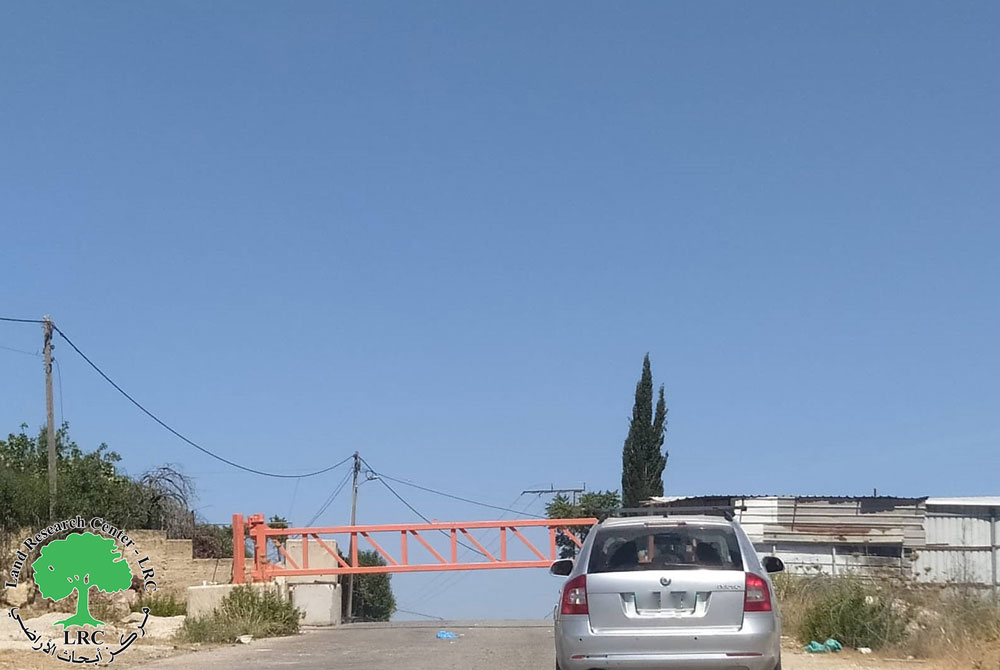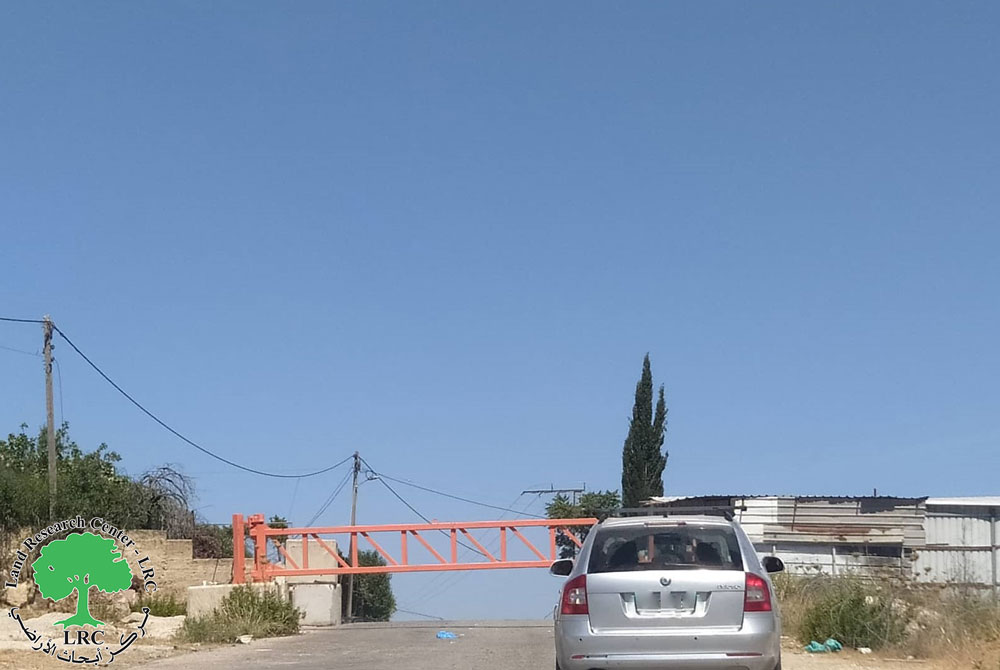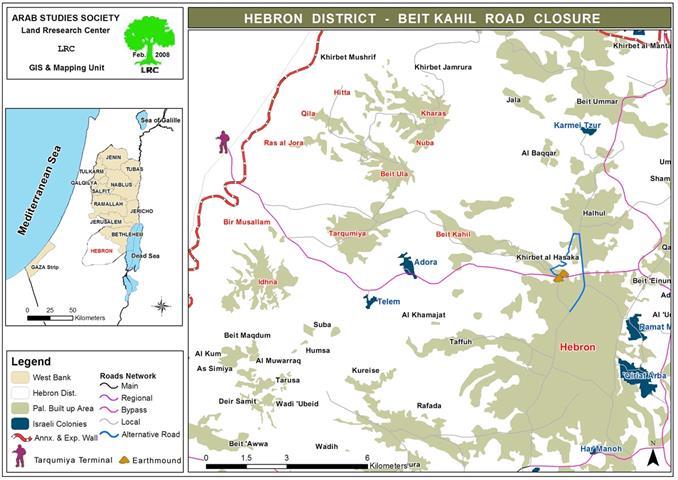Introduction:
Bir Al Mahjar-Beit Kahil road (locally known as Beit Kahil Bridge) is considered the only western entrance to the city of Hebron after the Israeli Occupation Forces completely closed down Farsh Al Hawa Road. The bridge is located to the northwest of Hebron city and connects it with all towns and villages of the Western Line. In addition, it's the only road connecting the City of Hebron with Tarqumiya Terminal which is considered to be the main commercial crossing point for the entire southern part of the West Bank (including the Governorates of Bethlehem and Hebron).
Description of the Western Entrance:
The Bir Al Mahjar-Beit Kahil road used to be the main road connecting the City of Hebron with the towns of Beit Kahil and Wadi Al Quf. In 1996, The Israeli Occupation Forces diverted traffic on the road and confined it only with a small underpass atop which runs on bypass road number 35 which connects the settlements of Kiryat Arba, Kharsina with the settlements of Telem and Adora and with those inside the 1949 Armistice Line. As such, the only remaining entrance is an underpass with a 6 meters width and 5 meters height.
(Photo 1: Closing the road leading to Beit Kahil bridge )
On February 5th, 2008, and without prior warning, The Israeli Occupation Forces completely closed down the underpass with a huge earth mound that filled it from top-to-bottom in addition to large stones and sand.
( Photo 2: Beit Kahil bridge closed by the Israeli Occupation)
Entrance Users:
A) The underpass is the only direct road that connects the city of Hebron with the towns of Idhna (pop. 20,000), Tarqumiya (pop. 15,000), Beit Ula (pop.: 10,000), Nuba (pop.: 4,000), Kharas (pop.: 5,000) in addition to Al Joura, Qila, Touwas and Hatta hamlets whose combined population is about 3,000. As such, this entrance is used by 57,000 Palestinians on daily basis. These Palestinians access Hebron City as it is the center of service for them in the following fields:
-
Education: schools, teachers, universities, institutes and vocational training centers.
-
Internal Commerce: Hebron Old city is the only market for farmers in the above-mentioned towns and villages. They market their products on daily basis in the City. They also use the markets in Hebron for shopping (including clothes, electrical items, building materials, agricultural tools, food items, etc.)
-
Administrative Connections: the headquarters of a number of national ministries and service centers are located in Hebron City, examples include: the Ministry of Interior, the Ministry of Local Governance, ID and passport registration, courts in addition to all Palestinian Authority directorates which Palestinians access on daily basis.
B) The underpass connects Hebron City to the road leading to Tarqumiya Terminal which is used by thousands of Palestinian workers on daily basis. It is also the main artery for the commercial activity in the entire southern part of the West Bank; thus, the closure of the underpass will have a negative effect on:
-
External commerce: Tarqumiya Terminal is the only terminal in Hebron Governorate that is accessed on daily basis by hundreds of trucks. These trucks carry food items (including flour, rice, canned foods, vegetable, fruits and the like), all types of fuel, cooking gas in addition to building and construction materials such as iron and cement. In addition, all commercial containers imported by Palestinian businessmen from China, Egypt, Europe or the United States have to go through Tarqumiya Terminal. As such, the Terminal is considered to be the lung through which the South breathes.
-
Laborers�¢ï¿½ï¿½ movement: following the construction of the Israeli Segregation Wall, the Tarqumiya Terminal became the only outlet for around 4,000 Palestinian laborers going through it on daily basis to reach their work inside the 1949 Armistice Line (Green Line). The closure of Beit Kahil Bridge underpass has led to the disruption of workers�¢ï¿½ï¿½ daily routine and their late arrival to their work stations of an average of two hours daily. Such a delay leads to the loss of 8,000 working hours per day.
To conclude
Thousands of Palestinian citizens, students in schools and universities, businessmen and laborers were forced to use an alternative road to reach their destination after the closure of Beit Kahil Bridge underpass. Once people from the western sides of the Governorate of Hebron reach the outskirts of the city, they are obliged to head northwards through an unpaved road called Wadi Haska Road until they reach the town of Halhul located north of the City of Hebron. They then head back southward towards the city through the Halhul-Hebron Bridge next to which a permanent Israeli military tower and a gate are located. When the Israeli Occupation Forces close down the gate, traffic jams occur along with delays for both Vehicular and Pedestrian movements. This alternative routing adds an additional 5 kilometers to their journey only to get to a point which used to be only a few meters away from them.
In terms of commercial traffic, the additional distance and time caused an increase in the cost of transportation and the price of the transported commodities which negatively affects the whole population of Hebron Governorate (estimated to be more than 500,000 people).
Testimonies:
The Land Research Center has conducted a number of interviews with Palestinians affected by the closure of the underpass. To follow are excerpts of these interviews:
-
A Palestinian from Al Qawasmeh family indicated the following: My house is located 20 meters west of the underpass. My entry to the City to reach my father�¢ï¿½ï¿½s house (located only 15 meters east of the underpass) requires me to taker 5-kilometer- long detour.
-
A lady from Beit Ula who works as a teacher in Hebron City: After the closure of the underpass, I am obliged to leave my house at 5:00 AM to reach my work on time. I leave even before I make sure that my children are up and ready to head to their schools.
-
A farmer from Tarquimya: Farming has become useless. Too many closures, including the last one at the Beit Kahil underpass, made our ability to reach the markets early virtually impossible. It also causes the vegetables to become damaged.
-
A truck driver: I always pray for my safety daily before entering Haska Road. In case I meet another truck on the road, then we are stuck for hours. I used to be able to transport at least three truckloads daily. Nowadays I can�¢ï¿½ï¿½t carryout more than one load. The people I work for pay me per delivery, not a fixed salary.
-
A female student at the Palestine Polytechnic University: I am currently obliged to miss some of my classes as attendance would mean that I have to be late to get home until 5:00 PM. I can�¢ï¿½ï¿½t go back to my town of Nuba after that time as there is no available transportation at that time.
The closure of the underpass is considered as a collective punishment that directly affects 57,000 Palestinians and 500,000 indirectly. It is a violation of all International Laws and norms and contradicts the fourth Geneva Conventions. Colonial roads are becoming like walls that separate Palestinian communities from each other, such as the case with Beit Kahil underpass.
The Land Research Center condemns this collective punishment and warns of its implications that push Palestinians to a state of despair. The Center, also, demands that the Israeli Occupation Forces reopen the underpass immediately and calls upon the European Community to pressure the Israeli government to lift this closure and all other needless ones throughout the West Bank. See Map 1
( Map 1: the entrance to Beit Kahil bridge and villages affected by the Israeli blockade)
Prepared by:
The Land Research Center
LRC


